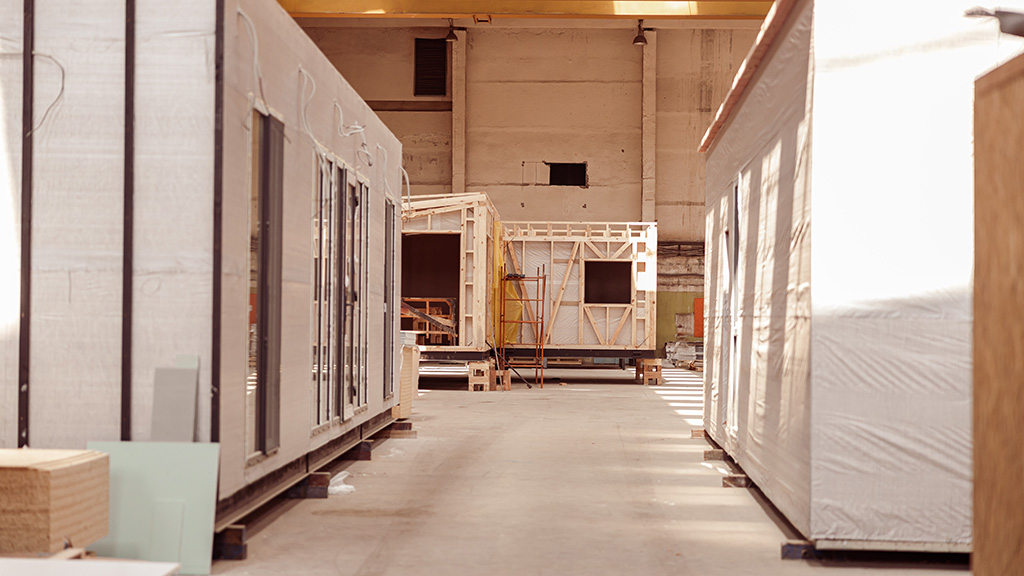When it comes to solving the issues of housing affordability and supply, modular housing may be part of the solution.
“The question is how do we mass produce high quality, sustainable housing in an affordable way?” asked Albert Bendersky of BECC Modular during a panel discussion at the Residential �鶹��ý����ion Council’s (RESCON) Housing Summit, held virtually recently.
“To simplify, we do it the same way we mass produce cars or cellphones or any electronic gadgets. The volumetric modular method of construction…actually provides that answer.
“We build them offsite the way people build cars. We build it with very well thought through design. We build it with amazing labour, highly-educated labour…That’s the way you resolve it.”
He spoke about the four “Ss” which includes speed, sustainability, safety and selection and the four “Ps” which include predictability, precision, productivity and preparedness.
“Obviously as we manufacture homes, multi-unit, multi-storey units, modules in our manufacturing facility the way BMW manufactures cars or Apple manufactures cellphones. We do it very fast, much faster than stick frame methods that are still used on our sites. Usually on midsize projects the reduction of site time would be 30 to 50 per cent. Right now were looking to 15 to 17 storey highrise buildings. We’re looking at 70 per cent of time reduction onsite.”
Tad Putyra, president and COO at Great Gulf Low Rise, said in Europe modular construction has been used for years and it’s time more modern methods of construction are used in Canada as well.
“Why now? Because all the pieces of the puzzle are available,” said Putyra. “Building Information Modeling is widely used. BIM, besides being a tool of accuracy and collaboration, can be interfaced with CNC manufacturing equipment.”
The shortage of skilled labour is another factor to consider.
“I see a big change among our customers,” he added. “Builders are assessing cost in a more holistic way and beyond traditional decisions. Holistic assessments of cost, of waste, rework, general conditions and value of time will be supportive of offsite construction.”
For Habitat for Humanity, moving to prefabricated solutions is more of a necessity, said Joshua Benard, executive vice-president of real estate development and construction with the organization. He pointed out moving work to a more controlled environment is safer and provides shelter from the elements.
“It’s harder to get building permits and everything lined up and usually projects are delayed years,” Benard said.
“This way we’re not having to wait to start framing a building. We have our permits, maybe the foundation is going in, we can start framing offsite. It’s something that we’re looking at moving forward, not because it’s going to necessarily save us money but just because it’s necessary for us to meet the kind of demand that we need to meet.”
When asked what all levels of government need to do to make this possible, Putyra said financial assistance and tax measures are always helpful, but the government can also help with R&D funding.
“You know on one hand our industry is advanced on the other hand we are still at the very early stage of overall education,” he said.
“Perhaps we could look into a large demonstration building exhibition park similar to parks in Stockholm and Vienna where manufacturers are presenting their products.
“We are expecting developers to drive the demand for prefab units but builders, including large American, even public companies, typically don’t have R&D departments.”
Integrated technology demonstration testing and training could grow the industry, he added.
“Government could encourage investment in the offsite manufacturing sector by providing long-term contracts to qualify candidates,” Putyra said.
“I have seen positive results of this kind of program in Europe. As far as I’m concerned this is probably the biggest thing that government could do for us to support long-term investment and long-term production.”
Bendersky said governments still have a lot to learn about modern methods of construction and offsite solutions.
“Practically every week, two three times a month we’re meeting with governmental officials that are coming to our manufacturing facility to our design studio and asking us questions that floor me,” he explained.
“It shows that the level…or lack of knowledge is unbelievable. ‘How do we start the process? How do we design?’ We’re going out and we’re trying to educate as much as we can.”
New tools are also needed, he added.
“Government has to understand that you cannot resolve the existing crisis with the old tools and in order to use new tools, you have to learn how to use them,” he explained.
“If tomorrow you’re receiving new software, you are not starting to use it the same way you used your previous software. You have to learn it, you have to take some courses, you have to check some exercises and then you do it.”
RESCON president Richard Lyall, who moderated the panel, said there has been some talk about developing a RESCON modular council and bringing together stakeholders to discuss the issue and come up with solutions.
Follow the author on Twitter .






Recent Comments
comments for this post are closed